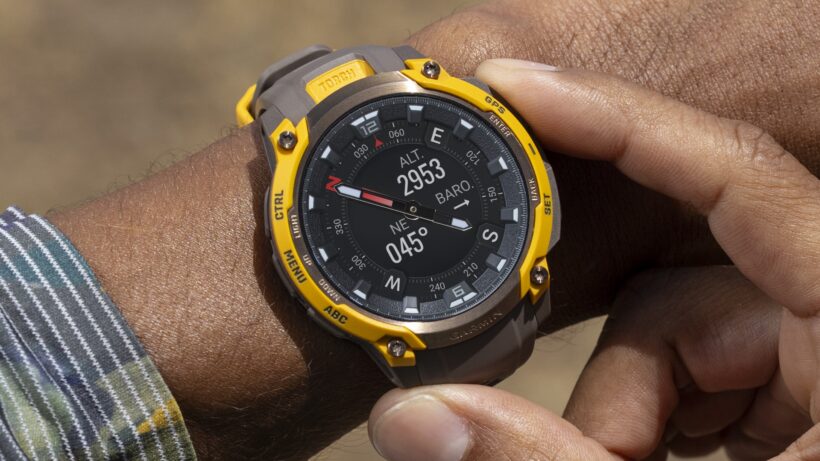The revamped hybrid arrives with some much-needed changes—but at a big cost to battery life
Garmin has announced the Instinct Crossover AMOLED, a new version of its rugged hybrid smartwatch that pairs mechanical analog hands with a full-color AMOLED display.
It arrives alongside the brand’s surprise refresh to the Venu 4, marking a significant day of launches for the company.
The first update to the Crossover line in over two years, it’s a clear sign that Garmin isn’t yet giving up on the increasingly niche hybrid category.
This latest refresh—available for $649/£519—appears to address the most significant flaws of the original Instinct Crossover by offering a dramatically improved screen.
After all, the original Instinct Crossover failed to impress us when we reviewed it in early 2023. We found that the physical hands constantly got in the way of the monochrome digital display, creating a cluttered and frustrating user experience.
AMOLED, Multi-Band, and a ‘Tactical Edition’
The new AMOLED model aims to solve that exact legibility issue by replacing the dim transflective screen with a bright, vibrant, full-color display protected by a scratch-resistant sapphire crystal lens. The analog hands, which dynamically move out of the way to reveal the screen beneath, also feature a Super-LumiNova coating for enhanced visibility in low-light conditions.

Beyond the screen, the new Crossover gets a host of other significant upgrades. For the first time, it includes Multi-Band GNSS, bringing a considerable boost in GPS accuracy for outdoor tracking and navigation.
The build quality has also been refined with a durable stainless steel bezel. Another welcome hardware upgrade is the addition of a built-in LED flashlight—a feature that has been making its way across Garmin’s high-end lines this year.
Garmin is also releasing a premium Tactical Edition of the watch, which will include specialized features such as night vision compatibility, stealth mode, and Jumpmaster mode.
On the software front, the Crossover AMOLED is also getting Garmin’s latest wellness tools, including the new Lifestyle Logging feature (also seen on the Venu 4) that allows users to track things like caffeine and alcohol intake to see their impact on recovery.

However, these significant upgrades come at a major cost: battery life. The original Instinct Crossover boasted an impressive 28 days of battery in smartwatch mode. The new Instinct Crossover AMOLED, by contrast, offers just 14 days.
Considering the power-hungry AMOLED display, that’s still a solid estimation for a hybrid watch, but it’s a 50% reduction from its predecessor. We’ll be putting the latest model through a full real-world test to understand just how significant this is to the experience.
The Wareable take
The arrival of the Instinct Crossover AMOLED is an interesting one—and it shows Garmin is still willing to experiment in a category that most other brands have long abandoned.
The key question is whether the new AMOLED display can solve the fundamental usability problems that plagued the first-generation Crossover. In theory, the bright, high-contrast screen should make it much easier to read digital information around the physical hands, potentially making the whole concept finally click into place.
However, for a watch in the Instinct family, which is designed primarily for ruggedness and endurance, the drop in (claimed) battery life is a massive trade-off. Halving the battery life feels at odds with the core identity of the product line.
Ultimately, the Instinct Crossover AMOLED is a bold attempt to revive a flawed concept.
Its success will depend entirely on how well those physical hands and the new digital display work together in practice. It’s a niche device for a niche audience, but for those who have always wanted a true G-Shock-style hybrid with a modern screen, it could be a very compelling, if compromised, option.




